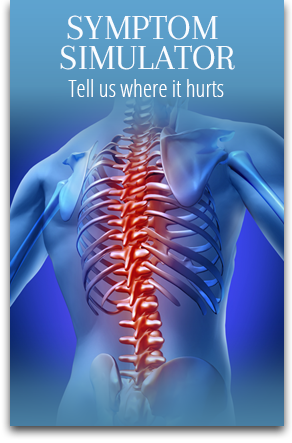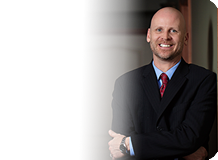Bone Out Of Place In Your Back?
 Q: If I have a bone out of place in my back, and a chiropractor adjusts my spine, why would I need to be adjusted again?
Q: If I have a bone out of place in my back, and a chiropractor adjusts my spine, why would I need to be adjusted again?
A: Let me first say that your question is common (it’s not a strange question), and part of it stems from a common misconception. The answer will address your concern and hopefully clear up the misunderstanding.
I will certainly answer directly, but I’ll give you the following scenario to illustrate a point. I once dislocated my right shoulder and was put in a sling for several weeks thereafter. Prior to this injury I did not have an elbow problem (nor a shoulder problem). After faithfully wearing the sling at night, in the shower and throughout the day for the full duration recommended, I removed the sling, only to find that my elbow was exceedingly stiff. After having had my elbow bent at 90 degrees all day and night, it was very difficult for me to make my elbow straight. The muscles and ligaments that help me bend my elbow had become very tight. I had a simple understanding of this dilemma at the time and realized that I needed to stretch these muscles, so I did. By the next day my elbow was stiff again (though a little less)! My muscle was short and I had stretched it. Why should I have to stretch it again?
The soft tissues of our body, such as muscles and ligaments, demonstrate properties often described as viscoelastic. If I put on my glasses for 20 seconds and then remove them, it will be difficult to tell that I’ve worn them at all. After 8 hours of wearing them, there will be two obvious dents in my nose. This is an example of viscoelasticity. If the tissues are deformed for long enough, they will begin to accommodate (for better or worse). My muscles and ligaments had accommodated to my elbow being bent. To restore them to their previous length, a considerable amount of “deformation” in the opposite direction was required; a 15-second stretch would not be sufficient to retrain those muscles.
Though a common problem I deal with as a chiropractor is often referred to as a “bone out of place,” that is rarely what I see as a practitioner. The bulk of what I work with would more accurately be described as “an unwillingness of a joint to move” within a certain range of motion (segmental dysfunction), and it’s usually been that way for a considerable amount of time. The bone-out-of-place idea misleads one to believe that the spine is simply a stack of bones without the influence of surrounding muscles and ligaments. I will suggest to you that if that were the case, one adjustment would render you healed, everyone would love chiropractors and I’d be a millionaire. In daily practice I spend much of my treatment time encouraging certain joints to achieve a certain amount of movement with a specific adjustment. There are components of the dysfunction that will be alleviated within one or two treatments, but the muscular and ligamentous issues take more intervention to resolve. Tight muscles often restrict a joint from achieving a certain motion. If the doctor neglects these issues, the motion problem is likely to persist. In other words, you will enjoy improved joint motion with your first adjustment, much like I did with my elbow; but, in most cases, that joint will need to be reminded of what it is supposed to do until it is retrained. The number of visits in your treatment plan, and the frequency thereof, is established to restore the function of your spine to what it was prior to the onset of the problem you have, or as close as possible.
Hugh Cradduck, DC







